The Trust has a wide range of reserves to manage and maintain, many of which are rare habitats within Hertfordshire and Middlesex. All of these need a lot of time and resources to manage them in a good condition so that wildlife species specifically found on that site thrives, whether it be a grassland, wetland, woodland or heathland habitat. Here, Dan Townsend, our Senior Reserves Officer, shares first-hand knowledge of two current projects on our reserves, which we are working on with the help of our partners to improve these important habitats.
Reviving Vital Grasslands
Marbled white butterfly on a common spotted orchid in a wildflower meadow © Tom Marshall
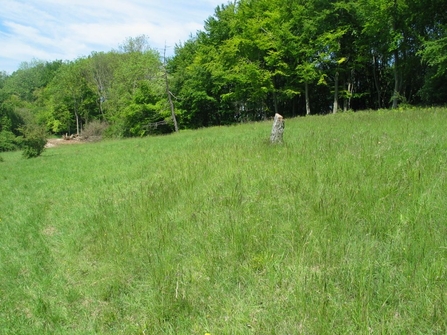
Alpine Meadow grassland (c) Paul Thrush
Alpine Meadow Nature Reserve
Alpine Meadow is a small calcareous grassland on a sheltered south facing slope designated a Site of Special Scientific Interest (SSSI) for its rich assemblage of plant species associated with unimproved chalk grassland. This is one of few calcareous grassland reserves left in our area with species such as Common Twayblade and Common Spotted-orchid. This site also supports a range of invertebrates including Yellow Meadow Ant, with its large ant hills, and butterfly species such as Marbled White.
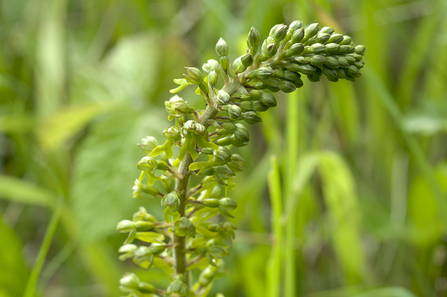
©northeastwildlife.co.uk
Typical management for a calcareous grassland would be through sheep grazing however a regime of cutting and raking would be used where there is an absence of livestock. Over the last few years Alpine Meadow has suffered as we have been unable to find a grazier willing to graze the site due to the number of dog attacks on their livestock. Lack of resources has further contributed as until recently we have been unable to carry out a suitable cutting regime in place of grazing. Recently, the Trust have been carrying out winter cuts in both November and March to reduce the dominance of coarse grasses which dominate chalk grasslands where there is a lack of grazing. These cuts have helped to reduce the bulk of the tufts but without grazing, it’s difficult to keep on top of.
With the help of Natural England, the Trust has now secured sufficient funding through the Farming in Protected Landscapes (FIPL) grant which will help us to install livestock fencing, including fencing along the footpath, giving us the infrastructure needed to allow sheep grazing, and to keep dogs away from them. This installation is due to happen in early February this year using specialist contractors and during the summer period a local grazier with sheep will move their animals onsite.
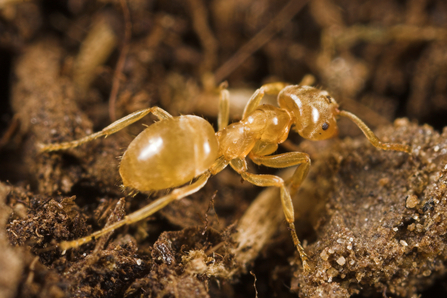
Yellow meadow ant ©Paul Richards
The grazing compartments have also been extended into the woodland with the help of The National Trust, who own the site, creating some glades and allowing light into this very shady woodland. These light traps with the woodland will attract a range of butterfly species with the hope to eventually grass over with some chalkland species.
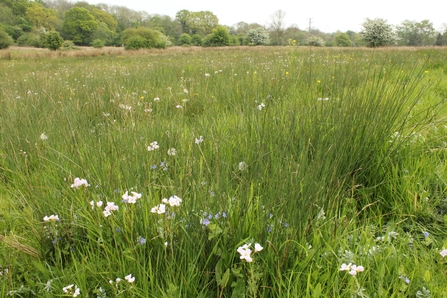
Blagrove Common (c) Charlotte Hussey
Blagrove Common Nature Reserve
Blagrove Common is a marshy grassland supporting species of the fen meadow type such as Blunt Flowered Rush and Marsh Thistle. This reserve is also designated as an SSSI for floral interest with species such as Ragged-Robin, Marsh Marigold, Common Spotted-orchid, Early Marsh and Southern Marsh Orchids.
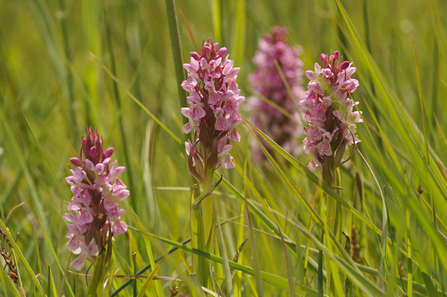
(c) Terry Whittaker/2020VISION
This reserve is currently grazed by cattle supplied by Capel Manor College with rare breed Red Polls. They graze the common from July until October. This is an essential part of the management to break up the larger tussocky grasses and create structure within the reserves. The Trust have a specialist contractor carry out meadow cutting and collection to help reduce the dominance of Soft Rush and some of the bulky grasses. With this combined management the common is in relatively good condition with well over 1000 individual orchids flowering during the summer.
Marsh Marigolds (c) Tim Hill
Following some surveys from Natural England at Blagrove Common there was a lack of the wetland indicator species found. Further studies found the site seems to be drying out and the common wasn’t holding water as it should. With the help of Natural England and through funding they have provided, they arranged for a wetland species survey of the site from a hydrology perspective. This was done using bore holes and checking the dampness of the site. Through these surveys, Natural England’s specialist contractor has drawn up some plans to use spoil from the reserve to block up the central ditch running through the reserve. This will help to hold back the water keeping the site wet for longer, encouraging the wetland specialist plants to recolonise those areas where they were absence from previous surveys.
Both of these projects are part of the essential work the Trust carries out to maintain our SSSIs in top condition. Both of these rare grassland habitats, although very different to one another, need constant input and management to maintain to a high standard and create opportunities to support a range of wildlife.
If you would like to contribute to the work of the Trust, there are many ways you can help us to protect and improve important habitats for wildlife - please consider becoming a member, volunteering or donating – thank you.

